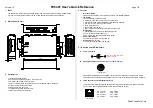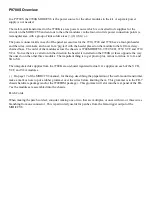
Assembly
30
03.01/3-Finger Centric Gripper PZN-plus/en
The hysteresis to both switching points will be adjusted automati-
cally corresponding to the characteristics of the magnetic field.
The user can set the switching and trigging points of each position
a little bit closer than for the automatic mode. The trigging point is
closer to the switching point. At the same time the susceptibility to
trouble and damage increases. In the mode of the lowest hystere-
sis, an error signal (such as jitter or untimely switch off) can be
avoided, if the sensor is protected against all types of disturbances
(i.e. by shielding). Frequent types of disturbances are change in
temperature and electro-magnetic influences.
Within the closest fine-teach mode, SCHUNK cannot guarantee
EMC-compatibility any more.
The hysteresis adjustment is used for the manual adjustment of
the switching points (if necessary).
In case that the hysteresis automatically determined by the sensor
should be too high or too low after “the adjustment of the switch-
ing points”, you may correct the value as follows.
The sensor avoids a too small hysteresis during hysteresis adjust-
ment. The lowest securely detectable difference in stroke is ≤10 %
of the nominal stroke.
3
4
5
1 Press the Teach-Button (4) for 5 seconds.
LED 1 (3) flashes from the second to the fifth second
LED 1 goes out after 5 seconds
2 Release the Teach button.
3 Move the gripper to the "switch-off point for switching point
1" position.
4 Briefly press the Teach button (4). LED 1 (3) flashes 2x
5 Move the gripper to the "switch-off point for switching point
2" position.
6 Briefly press the Teach button (4).
LED 2 (5) flashes 2x
The assembly of the MMS-P sensor is completed.
Adjusting the
hysteresis
















































